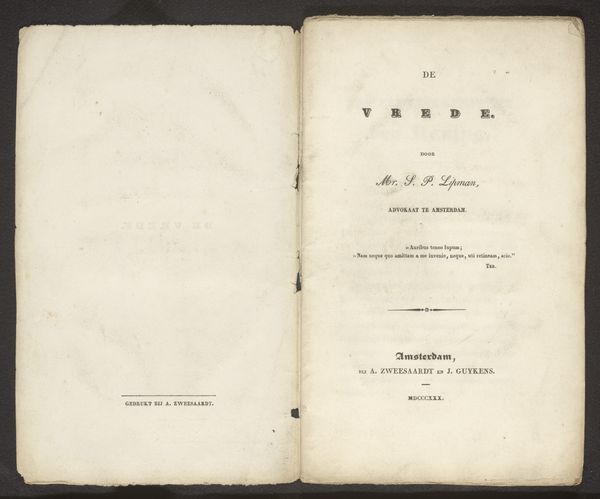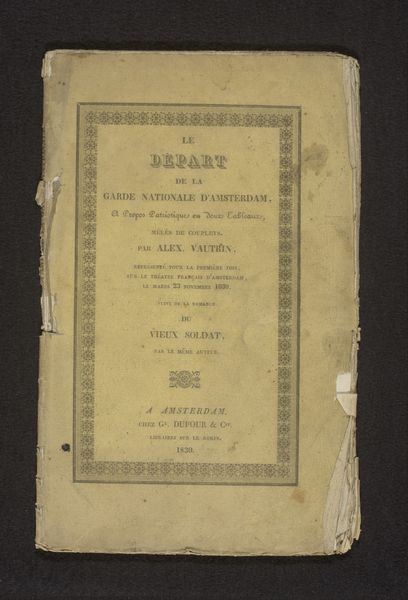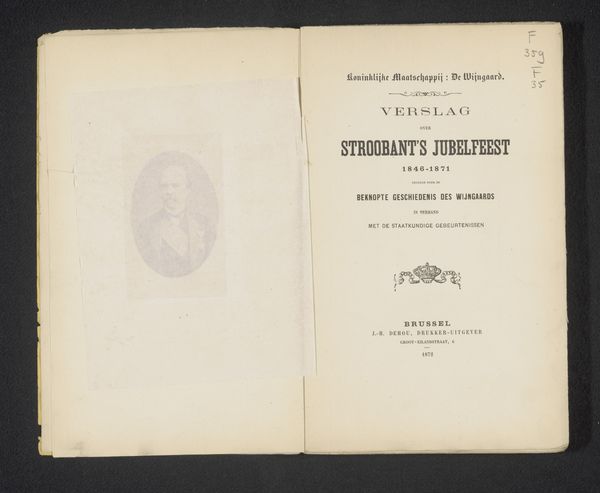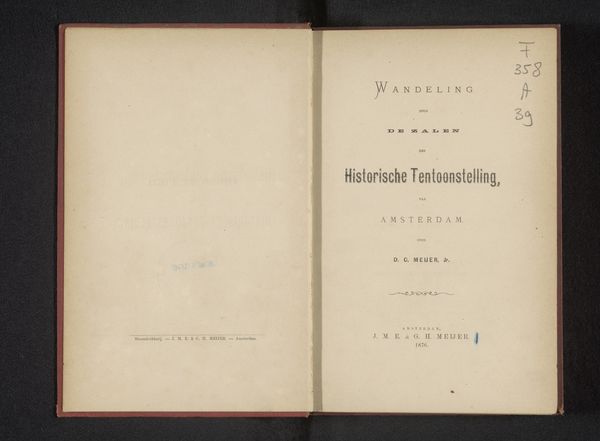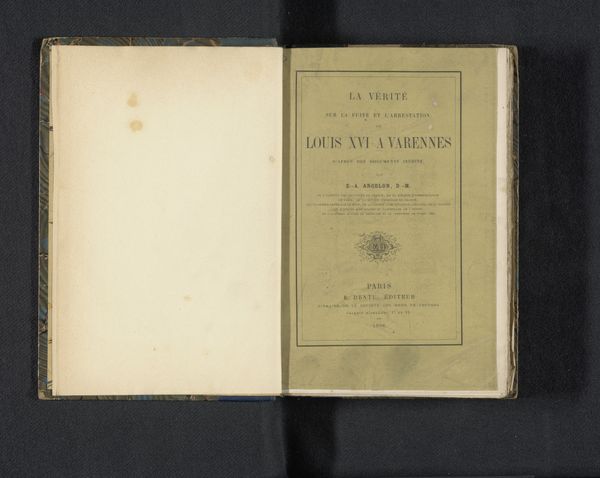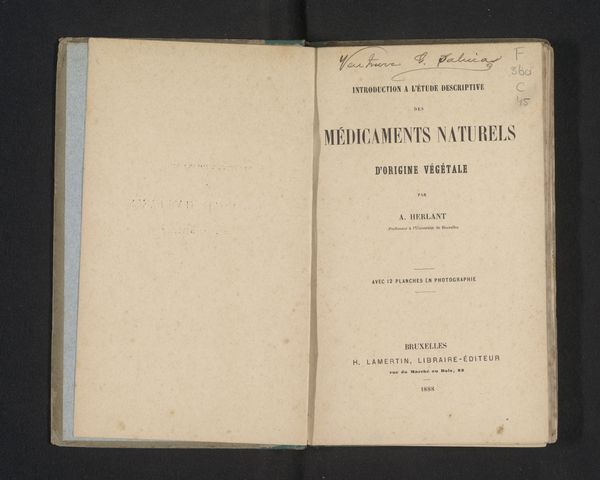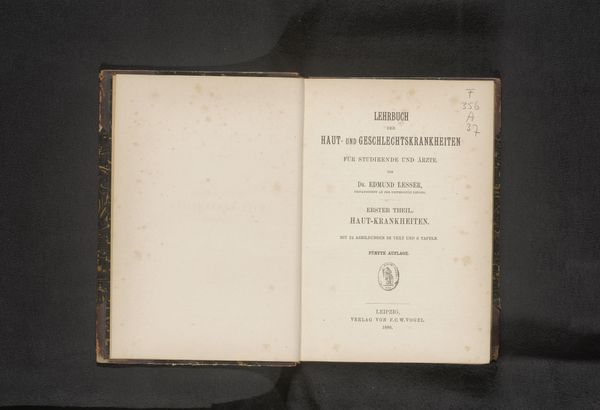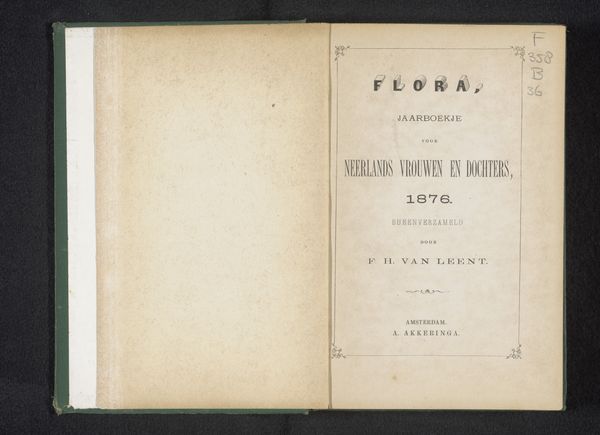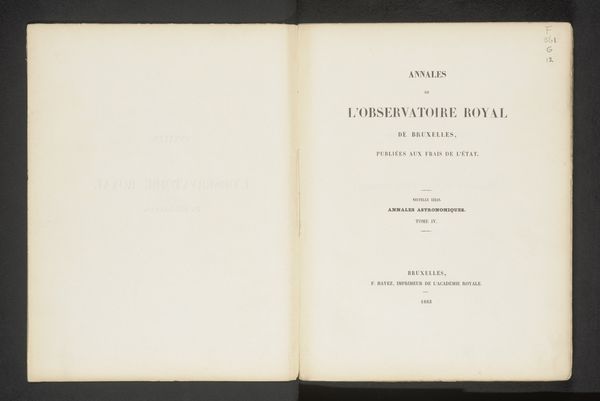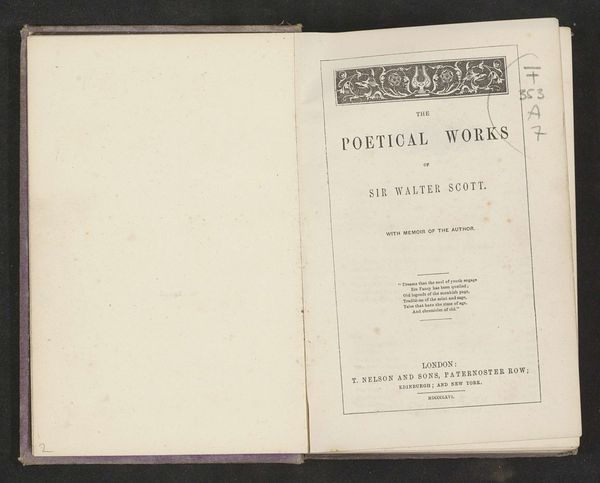
Verhaal der inwijding van het gedenkteeken ter nagedachtenis van L.J.W. Beeckman, gesneuveld als vrijwillig jager der Leydsche Hooge School 1832
0:00
0:00
drawing, print, paper, typography
#
drawing
#
neoclacissism
#
aged paper
#
homemade paper
#
reduced colour palette
#
paperlike
# print
#
white palette
#
paper texture
#
paper
#
personal sketchbook
#
typography
#
folded paper
#
historical font
#
columned text
Dimensions: height 22 cm, width 14.5 cm
Copyright: Rijks Museum: Open Domain
Editor: This is "Verhaal der inwijding van het gedenkteeken ter nagedachtenis van L.J.W. Beeckman," made in 1832. It looks like a printed dedication or memorial, by Johannes Hendricus van der Palm. The paper looks old, and it feels quite somber. How do you interpret the piece, looking at it from an activist perspective? Curator: What strikes me immediately is the emphasis on remembering L.J.W. Beeckman, described as a volunteer. It's vital to consider who gets remembered, and why. How does the dedication serve power structures of the time? Neoclassicism was linked to the Dutch national identity at the time; it emphasized reason and order. Consider whose stories are being told, and whose are erased in favor of a particular national narrative. Editor: So, it’s not just about remembering this person, but also about shaping a narrative around them. How does that relate to its Neoclassical style? Curator: Exactly. Neoclassicism, with its clean lines and ordered typography, invokes a sense of authority and permanence. This print attempts to solidify a specific, presumably patriotic, narrative. The 'volunteer' angle is interesting, it suggests a conscious effort to construct a particular kind of heroic citizen. Editor: Is that a kind of active building of mythology, using artistic styles and printing techniques? Curator: Precisely! And it begs the question, who gets to be a hero, and what sociopolitical contexts were in play? Were all volunteers viewed equally, or did race, class, or gender impact their position within this narrative? We must deconstruct such portrayals. Editor: I didn’t think about it like that, seeing beyond the immediate dedication to its socio-political impact. Curator: Reflecting on who holds the power to construct historical memory enables us to build more inclusive contemporary practices.
Comments
No comments
Be the first to comment and join the conversation on the ultimate creative platform.


